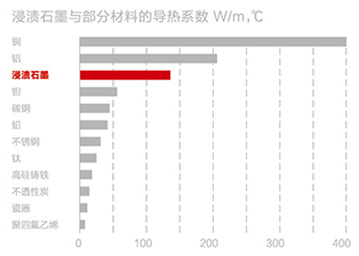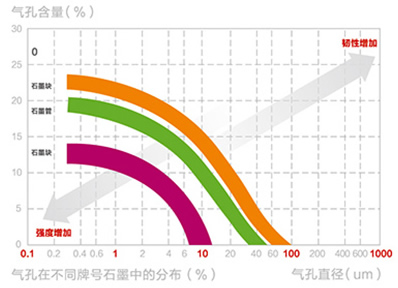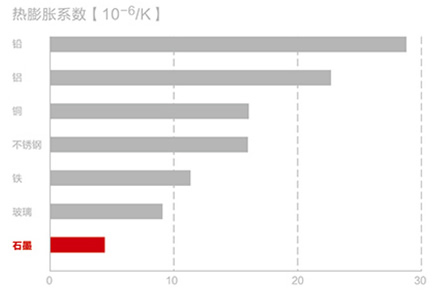Performance Features of Graphite in Chemcial Industry

The graphite material applied in chemical process is mainly artificial graphite and usually impregnated into impervious graphite due to its porosity, through which the physical properties enhanced by 2-3 times. The regular adopted impregnants are including synthetic phenolic resin, furan resin, PTFE, sodium silicate solution and bitumen. Composite of carbon fiber or ceramic on the surface of graphite, could improve its pressure bearing capacity, bending strength and wear resistance.
Anticorrosive Performance
♦ Graphite itself has excellent corrosion resistance and is only corroded by some strong oxidizing elements such as nitric acid, fuming sulfuric acid, chromic acid, aqua regia, halogen, etc.
♦ The corrosion resistance of graphite equipment in chemical processes mainly depends on the corrosion resistance of applied impregnant and thermal stability of the impregnating agent, as well as the pore structure of graphite.
♦ The exact application of impervious graphite with corresponding medium in chemical production could refer to corrosion resistance performance list.

Thermal Conductivity
♦ The impervious graphite is the non-metallic material in thermal conductivity which is much higher than many metallic materials and only lower than copper and aluminum, compared with some regular structure materials’. It’s the ideal material to fabricate heat transfer equipment, burner and gas cooler.
♦ The conductivity of impervious graphite block is 100~150w/mk, and 40~110w/mk for graphite tube
 Thermal stability
Thermal stability
♦ Graphite has an excellent thermal stability, its melting point is about 4000℃ before impregnation and working temperature is up to 3000℃, while its physical strength is upgrading along with the rising temperature.
♦ The max allowable temperature is 205℃ for regular synthetic resin impregnated graphite
Physical Strength
♦ The physical strength of impregnated graphite depends on its pores distribution. The more the pore distribution, the better the toughness of graphite, while the lower the pore distribution, the higher the mechanical strength.
♦ The isostatic shaped graphite has a more even pore distribution structure with smaller pores and higher physical strength.
♦ Different pore distribution structure with different graphite density between 1.55~1.91g/cm³
 Easy Processing and bonding
Easy Processing and bondingGraphite has an excellent processing properties, which is easy to process into various structures of equipments and components with good wear resistance and light weight.
♦ It’s convenient to bond graphites together, most of which by means of patching technology and it’s easy for site maintenance. The bonding agent is composed of graphite powder, resin and curing agent under a certain proportion, which could be proceeded on the site of customer
 Anti-Abrasion
Anti-AbrasionGraphite itself has a certain capacity of anticorrosion and easy for processing. To achieve a better wear resistance effect, we could compose the ceramic material on the surface, enabling it with a better anti-abrasion capacity, the Mohs hardness degree could reach 9 grade so as to improve the working life.

Thermal expansion coefficient
♦ Graphite has an excellent thermal expansion coefficient, better than most metallic materials. Its dimensional accuracy is stable during the high temperature application.











